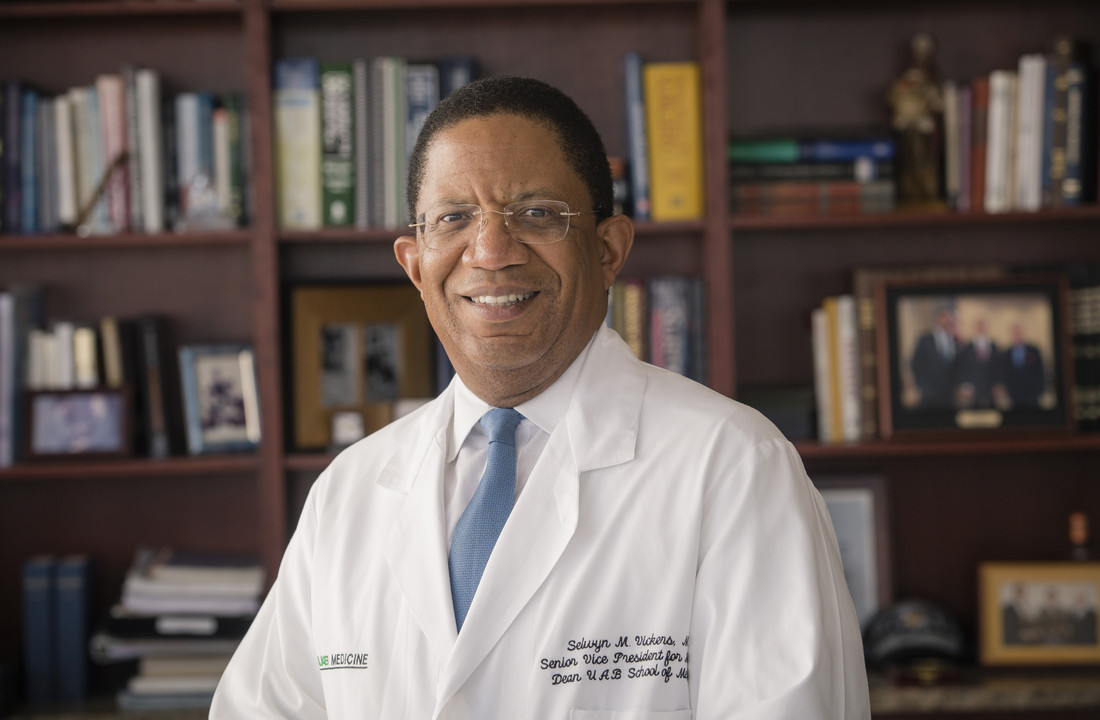 Here at the School of Medicine, we’re accustomed to working among individuals who are undertaking groundbreaking work. Our faculty and staff members are consistently making breakthroughs and using them to push medicine into the future. We’re also familiar with the phrase “from bench to bedside” and how science and medicine can work hand-in-hand to bring better outcomes for humanity. Recently, after several of our faculty members’ papers were published in a prominent journal, I was reminded of the role that basic science research plays not only here in our community but also in the world at large. It represents the “bench” portion of that phrase, and the truth is that it doesn’t always get the attention it deserves from the general public. But here at UAB, we understand just how vital basic research is to the advancement of treatments that can change lives.
Here at the School of Medicine, we’re accustomed to working among individuals who are undertaking groundbreaking work. Our faculty and staff members are consistently making breakthroughs and using them to push medicine into the future. We’re also familiar with the phrase “from bench to bedside” and how science and medicine can work hand-in-hand to bring better outcomes for humanity. Recently, after several of our faculty members’ papers were published in a prominent journal, I was reminded of the role that basic science research plays not only here in our community but also in the world at large. It represents the “bench” portion of that phrase, and the truth is that it doesn’t always get the attention it deserves from the general public. But here at UAB, we understand just how vital basic research is to the advancement of treatments that can change lives.
I’d like to highlight some of these recent accomplishments to remind us how intricately woven our connections are as scientists, physicians and physician-scientists. One of the most unique aspects of the UAB SOM community is the desire to not only collaborate, but to do so with enthusiasm and with purpose. Having said that, I want to turn the spotlight on Dr. Jaroslaw Zmijewski and Dr. Victor Thannickal for their recent publication in Nature Medicine. With the help of others at UAB, they have shown—for the first time—that established lung fibrosis can be reversed using a drug treatment that targets cell metabolism. Their work with metformin could lead to a potentially game-changing treatment for pulmonary fibrosis, which currently has very limited treatment options.
Only a few days later, our director of the UAB Comprehensive Diabetes Center, Dr. Anath Shalev, also had findings published in Nature Medicine. Dr. Shalev shared the outstanding news that her clinical trial to test the effectiveness of verapamil for treating Type 1 diabetes was, indeed, successful. The study revealed that regular oral administration of verapamil, a common blood pressure medication first approved for medical use in 1981, enabled patients to produce higher levels of their own insulin, which limited their need for injected insulin. This discovery will be particularly impactful in our part of the country, where the incidence of diabetes is higher than average.
Both of these drug-related research discoveries are extremely exciting for the clinical community. Not only are they already effective treatments, but they are also likely to lead others to find future advancements and even more enhanced treatment options. As your dean, I’m incredibly proud to be working with brilliant individuals whose aims are to improve the quality of human life.
Too often, we partition our mission into distinct segments of priority and value. Great institutions have one overarching mission: a commitment to improving the health care of the population and patients they serve. Fully embodied in that commitment is a dedication to all three missions (clinical, research and education). That commitment is also demonstrated by substantial allocation of clinical dollars and the need to have a return on investment in order to support basic science and fundamental discovery. These studies carried out by our faculty highlight the value and impact our institution offers to patients locally, nationally and globally.
I know that these three individuals aren’t the only faculty members at the School of Medicine who are doing extraordinary work. I applaud each and every one of you for the way that you’re pushing the envelope and embodying the mission of our organization. I hope you’ll join me in remembering to celebrate the success of those around us and to be grateful for our opportunities to collaborate with one another.